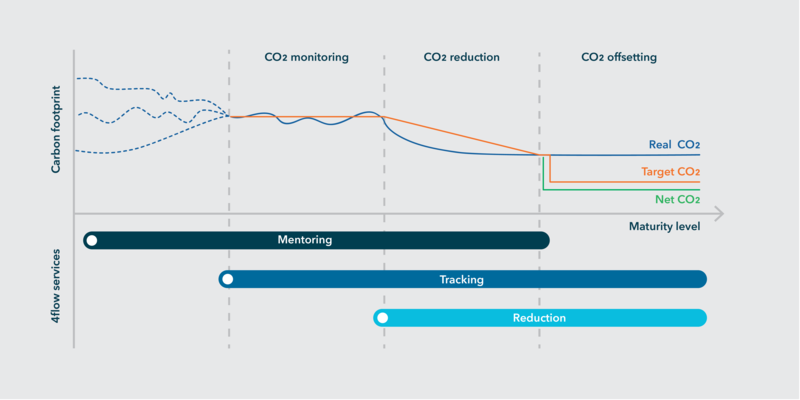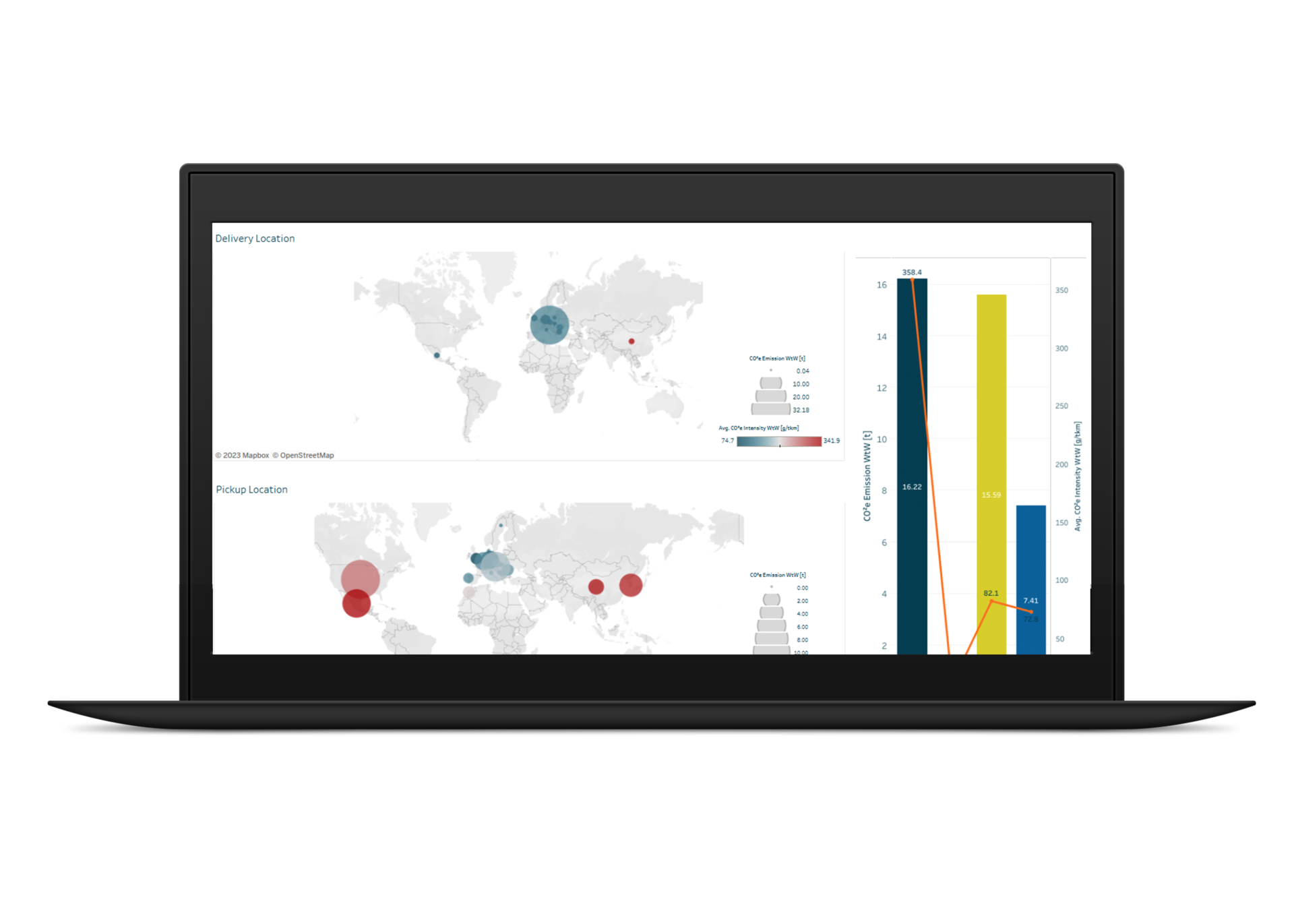Sustainability is on everyone’s agenda today. Customers, investors, regulators, and even employees are demanding the reduction of carbon emissions to meet sustainability benchmarks. A business’s ability to quickly reduce carbon equivalent (CO2e) emissions in its supply chain will be an important factor for competitiveness.
However, transportation networks are facing challenges that slow down sustainable supply chain transformations. Challenges can include:
- Lack of transparency on emissions
- No capability to calculate emissions
- Lack of knowledge about efficient reduction measures
4flow offers an accurate and customizable service for emission tracking in transportation networks. The emission calculation follows a bottom-up approach that complies to industry sustainability standards such as EN 16258 and GLEC. This basis enables effective decision making to reduce carbon emissions – and follow the path to green logistics.

Businesses benefit from a three-step project approach to ensure a successful transformation.
1. Mentoring
- Support and expertise about regulations, guidelines, and 4flow’s calculation approach
- Blueprint of your carbon reduction strategy in close collaboration with an expert sustainability team
2. Tracking
- Calculation of CO2e emissions based on your transportation data
- Increased data maturity to enable effective emission reduction
3. Reduction
- Transformation scenarios for your transportation networks considering emissions, cost and performance
- Collaboration towards a common carbon emission reduction goal
Are you interested in learning more about 4flow’s carbon tracking service for transportation? Contact our carbon emission experts today.
Benefits for 4flow customers
- Fast implementation (2-4 weeks)
- Integration into the 4flow iTMS solution available
- Customized solutions to meet your reporting requirements
- Greatest possible accuracy with specially developed bottom-up approach regularly reviewed by independent research institutions
- Mentoring by 4flow carbon emissions experts throughout the transformation
Reliable carbon emission tracking
4flow relies on methodology developed and reviewed by independent research institutes – including Fraunhofer IML – to calculate and track carbon emissions. Your business benefits from optimized transportation management thanks to an energy-based bottom-up methodology. This calculation is based on energy consumed and the fuel used, simulating the total transportation network. In contrast, most calculations follow a less precise top-down approach, which multiplies emissions by the weight of freight and distance traveled.
Input data such as routes, fuel consumption and emission class are considered in the bottom-up methodology. Results of the calculation include energy consumption, CO2e emissions and air pollutants.
The calculation depends on four steps:
Routing from origin to destination with information about each section, like road type or mode of transportation
Determination of fuel consumption with parameters such as vehicle type, emission class and utilization
Energy and emission calculation including freight weight, emission factor based on fuel consumption and distance including empty trip
Summation of all emissions for each section, including greenhouse gases, exhaust emissions and more
Get started tracking carbon emissions in weeks
Your basic transportation data (origin, destination, weight, mode) forms the basis for a map of all transportation modes in your global network – including intermodal transportation.
You’ll have access to a customizable dashboard to visualize and analyze emissions for each shipment. From here, review emission factors in your network to identify effective reduction measures. Moreover, the dashboard enables the visualization of routes for intermodal transportation and the collection of additional input data such as carriage parameters, fuel types or route sections.
Benefit from output consistent with your network maturity, even with varying input data. The proven implementation framework allows a fast set-up of carbon emission tracking within weeks.
Sounds interesting?
Contact us


